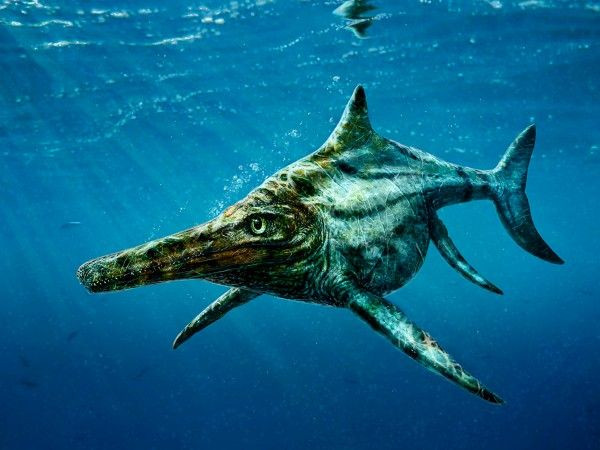170 Million-Year-Old Sea Monster Discovered On Scotland’s ‘Dinosaur Isle’ Fills Gap In Fossil Record

Scotland’s Jurassic past has emerged with the discovery of a prehistoric sea creature so terrifying it makes the Loch Ness monster look like an overgrown seahorse. The ancient marine reptile, called Dearcmhara shawcrossi, had a mouth full of teeth and dolphin-like flippers, measured 14 feet (4.3 meters) long and was a highly skilled swimmer, according to a study published Sunday in the Scottish Journal of Geology.
Its fossils were found on the Isle of Skye, commonly referred to as “dinosaur isle” for the high volume of fossilized dinosaur remains it has produced over the years. “[Dearcmhara] looks like a dinosaur, but it isn’t technically a dinosaur,” Stephen Brusatte, a paleontologist from the University of Edinburgh in the U.K. and lead author of the study, told NPR. “It’s the first of these sea-living, enormous, colossal top-of-the-food-chain reptiles that’s ever been found in Scotland. It was about motorboat size … about 14 or 15 feet long.”
Dearcmhara belonged to an extinct group of aquatic animals known as ichthyosaurs, which lived during the early to middle Jurassic period between 250 million and 90 million years ago, according to researchers. Its discovery shows that Dearcmhara thrived alongside other long-necked marine reptiles called plesiosaurs and has helped paleontologists fill in certain gaps in Scotland’s fossil record. The country is one of only a handful of places on earth with fossils from the middle Jurassic.
The fossil of Dearcmhara was actually uncovered more than 50 years ago, in 1959, by an amateur fossil collector named Brian Shawcross. Shawcross found the remains along Bearreraig Bay beach in the northern part of Skye, an area brimming with Jurassic relics that has been largely picked over by beachcombers.
"During the time of dinosaurs, the waters of Scotland were prowled by big reptiles,” Brusatte said in a statement. “Their fossils are very rare, and only now, for the first time we've found a new species that was uniquely Scottish.” Shawcross donated his fossil find to the Hunterian museum in Glasgow in the 1990s, where the bones sat unidentified until more recently.
Dearcmhara lived in warm waters and likely dined on fish and squid. The Isle of Skye was once completely covered in water and sat between two giant landmasses that would later break apart to become Europe and North America, according to the university.
“Not only is this a very special discovery, but it also marks the beginning of a major new collaboration involving some of the most eminent paleontologists in Scotland,” Nick Fraser of the National Museums Scotland said in a statement. “This is a rich heritage for Scotland.”
© Copyright IBTimes 2024. All rights reserved.






















